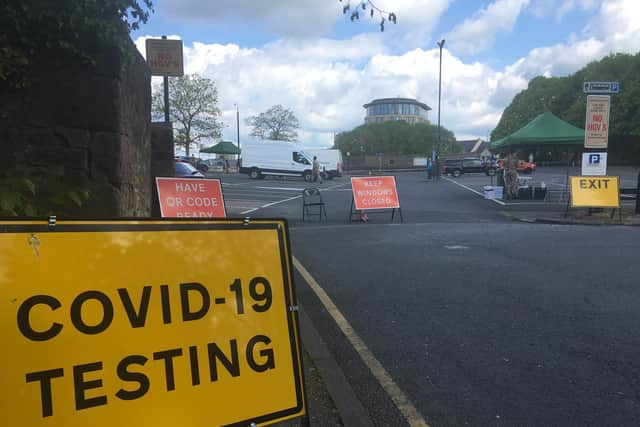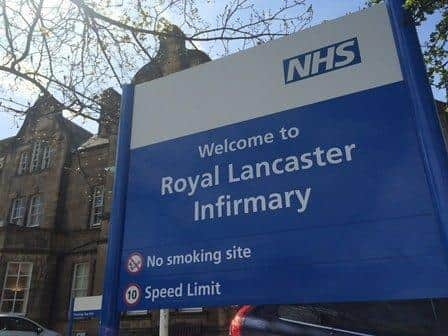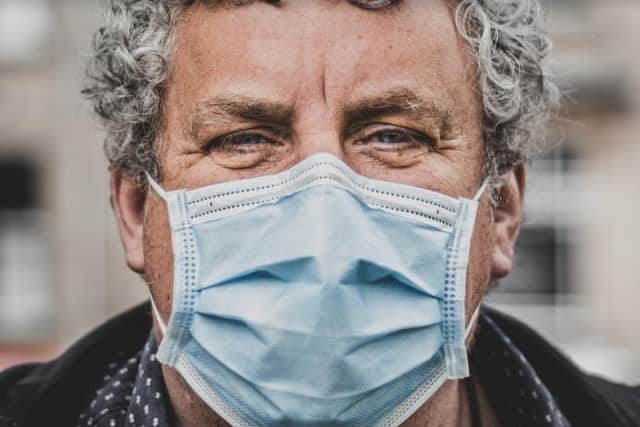Morecambe Bay hospitals boss says Covid-19 figures should be 'viewed with caution' after trust tests for virus in large numbers
and live on Freeview channel 276
A total of 155 people have now died with Covid-19 symptoms at University Hospitals of Morecambe Bay NHS Trust, which runs hospitals in Lancaster, Barrow and Kendal.
The trust recorded one further death over the weekend on Saturday, May 9.
There were no deaths recorded on Friday or Sunday.


Advertisement
Hide AdAdvertisement
Hide AdFigures recently released by Public Health England show that coronavirus infection rates per 100,000 people are highest in the local authority areas of Barrow, Lancaster and South Lakeland.
The data shows that the highest rate is in Barrow, which has reported 540 cases, or 804 cases per 100,000 population.
Lancaster is second on the list with 513 cases per 100,000 population, and South Lakeland is third which has 482 cases per 100,000.
However, UHMBT boss Aaron Cummins released a statement on Sunday, May 10, advising caution over the way the figures are viewed.


Advertisement
Hide AdAdvertisement
Hide AdHe said: "Whilst we are right to be concerned because the virus is still a challenge to our country, these figures should be viewed with caution.
"It is difficult to carry out a like for like comparison for different areas because of the different age structures and other socio-demographic factors, and of course, the varying levels of testing that have been carried out.
"As a Trust, we have been testing our colleagues and their family members, and other key workers for a significant amount of time and in large numbers.
"It is important that these figures are viewed in this context.


Advertisement
Hide AdAdvertisement
Hide Ad"Further investigation of all the data, including figures from the national testing centres that opened recently, needs to be carried out before any real conclusions can be made.
"However, it does highlight the point that the work is not over yet.
"We are still fighting coronavirus and as a trust and wider communities, we need to continue to pull together and do all we can to slow the spread of the virus, and protect ourselves and those around us."
On Sunday, Prime Minister Boris Johnson suggested the country could now take a different approach to Covid-19.
Advertisement
Hide AdAdvertisement
Hide AdThe advice is no longer "stay at home", but "stay alert", with moves to return some people - including manufacturing and construction workers - back to work.
There was also suggestion that certain primary school year groups - reception, year one and year six, would return to school from June 1, however only if safe to do so.
The new advice has received strong criticism from many sectors, and Labour has accused the government of leaving people "confused and anxious".
The British Medical Association (BMA) described the government’s ‘road map out of lockdown’ as too fast, too confusing and too risky.
Advertisement
Hide AdAdvertisement
Hide AdDr Chaand Nagpaul, BMA council chair said: “As the Prime Minister said in his address to the nation tonight, the death toll in this country has indeed been tragic, and it would be irresponsible to allow any chance of a second spike of this virus, however, these measures risk doing just that.
“There is no detail of how those being asked to return to work will be protected from the infection or prevented from infecting others and there are mixed messages about returning workers not using public transport when many will not own cars.
"These pose serious risks of further spread of the infection.
"There is no clarity on how social distancing will be monitored and enforced when lifting restrictions on visiting parks and public places and opening travel to any part of the land.
Advertisement
Hide AdAdvertisement
Hide Ad“Meanwhile the level of testing to monitor spread remains far below the capacity needed and there is still no agreement even about the best app for testing and tracing.
“So the message has to be clear. It is imperative that we do not risk people mixing with each other without the ability to rigidly adhere to social distancing.
“Without this assurance, lives are still at risk and the NHS is still at risk.
“Much of the government’s management of the Covid-19 pandemic have so far been inconsistent and lacking the absolute caution needed.
"We need to see clear plans and be confident that the shortcomings of the past are not repeated in the road map out of lockdown.”
More to follow...